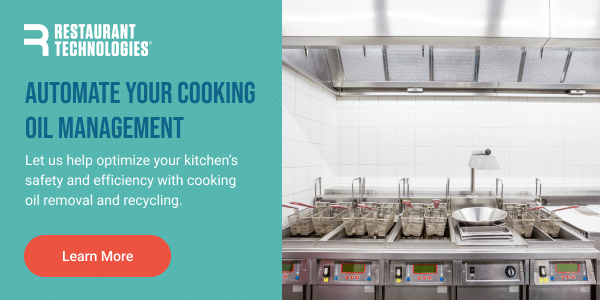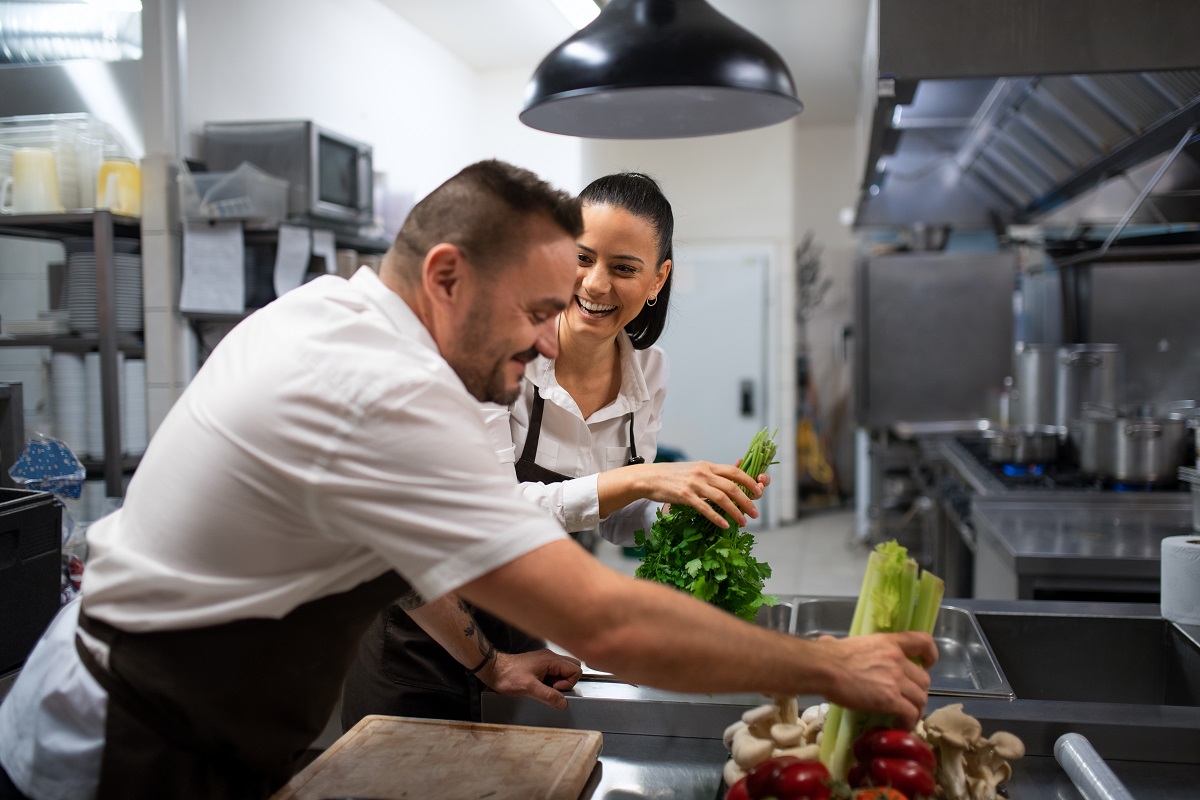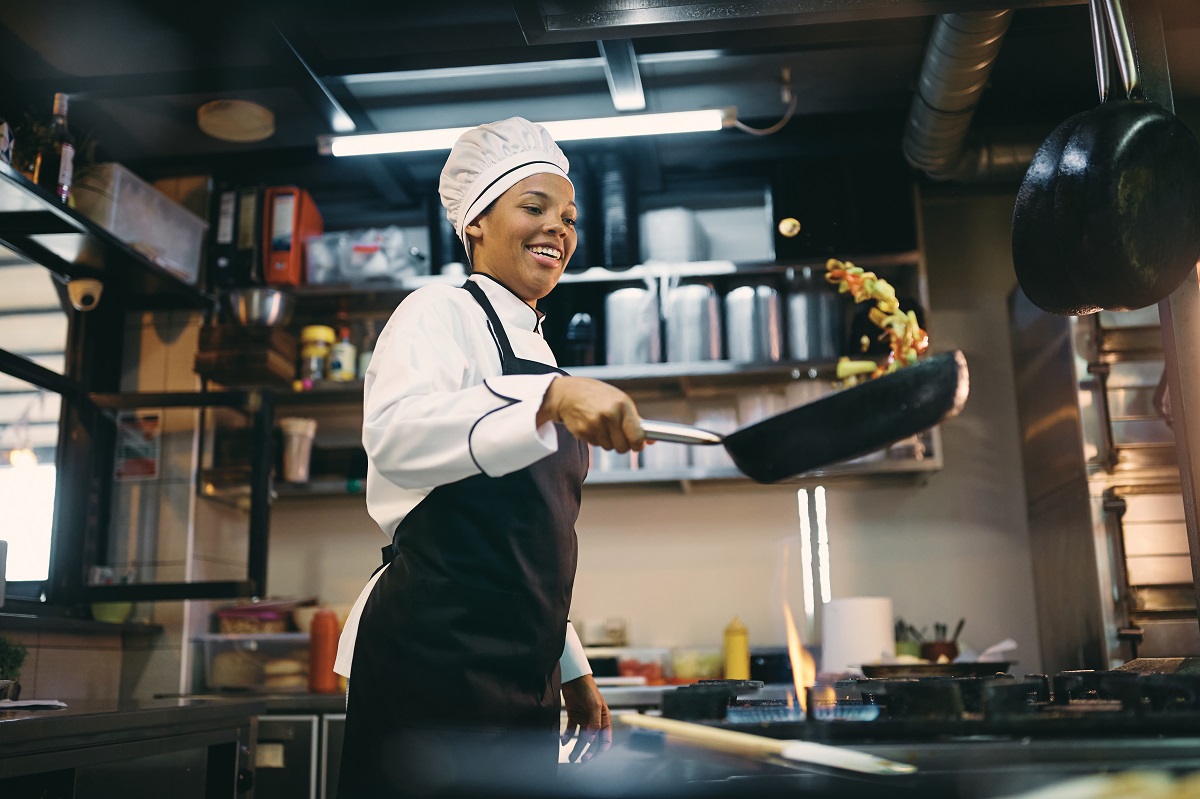Kitchen Staffing Challenges Are Reaching a Breaking Point
The High Cost of Employee Turnover
Employee turnover continues to strain the restaurant industry, and many operators are feeling the squeeze. According to recent data from the U.S. Bureau of Labor Statistics, the quit rate in hospitality remains one of the highest across all sectors.1 And it’s not just limited to seasonal workers or part-timers, but also tenured line cooks, prep staff, and dish teams are walking away too.
Many restaurant leaders understand just how costly and disruptive turnover can be. Not only does it cost thousands to replace a team member, it also places extra burden on the staff that remain, increasing their risk of burnout and dissatisfaction.2 It becomes a vicious cycle until operators break it by changing how they support their teams.
Common Sources of Burnout in Kitchens
While wages and scheduling flexibility are important, they’re only part of the retention equation. Many departures stem from something more fundamental: daily fatigue, physical wear and tear, and feeling unappreciated. In other words – burnout.3
Burnout often stems from:
- Unsafe, outdated processes
- Unclear communication or inconsistent leadership
- Long hours without proper breaks or support
- Manual tasks that could be automated
Crews aren’t asking for the work to go away—they’re asking for modern tools and workflows that respect their time and bodies.

How Better Tools Lead to Happier Teams
Reducing Physical Strain and Injury Risk
Workplace injuries in kitchens aren’t just common, but expected. That’s a problem. Slippery floors, heavy lifting, and exposure to hot surfaces are often seen as “part of the job,” but they shouldn’t be.
When employers introduce technology that help prevent these issues, they demonstrate that safety is a core value, not just a talking point. Closed-loop oil systems, ergonomic tools, and non-slip surfaces can significantly reduce common risks, keeping more people on the job, longer.
Streamlining Daily Tasks for Less Stress
When workers are bogged down by inefficient systems, the whole kitchen slows. Tasks like writing temps on a clipboard, running across the kitchen to clarify a ticket, or hauling trash mid-shift create unnecessary friction.
Tools that streamline operations include:
- Digital timers and task trackers to keep the team coordinated
- Automated sanitizer and hand-washing stations for hygiene compliance
- Integrated food safety dashboards to reduce documentation errors
When teams have what they need to work smarter — not just harder— they stay focused, motivated, and less overwhelmed during service.
Showing Teams They’re Valued With Smarter Investments
Retention improves when people feel seen. Installing smart tech may seem like a financial decision, but it’s also a cultural one. It tells your team: “We want you to have what you need to succeed here.”
That message builds loyalty. It also fosters pride. Employees are more likely to recommend their workplace to others or refer friends when they feel supported — a critical edge in a competitive hiring market.
Real Benefits for Operations and Morale
Higher Retention Rates Mean Lower Recruiting Costs
High turnover is more than frustrating; it’s expensive. Every time a team member leaves, restaurants absorb the hidden costs of job postings, interviews, onboarding, and lost productivity. Industry estimates suggest that replacing just one hourly kitchen worker can cost almost $6,000.4 That doesn’t even account for the strain it puts on remaining staff or the loss of service consistency.
Retaining experienced employees protects those investments. Seasoned staff work more efficiently, make fewer mistakes, and contribute to a more stable and confident kitchen environment. They also help train new hires and often step up during busy shifts without needing extra direction.
When turnover slows, managers can shift their focus from constant recruiting to coaching, refining systems, and strengthening service quality. Lower churn also reduces the need for costly temporary staffing solutions and last-minute schedule adjustments, which helps control labor costs.
Employee retention is more than a human resources goal. It’s a long-term business strategy that supports better performance, lower overhead, and stronger team culture. Investing in tools and processes that help employees stay isn’t just good leadership, but a smart, measurable way to improve operational health.
Stronger Culture and Better Team Performance
Culture doesn’t happen by chance. It’s shaped every day by the environment people walk into and the tools they’re given to succeed. When employees feel supported by systems that make their work easier, safer, and less chaotic, they’re more likely to engage with each other in positive, productive ways.
Smart kitchen tools reduce the friction that often leads to frustration. When communication is clear, prep tasks are manageable, and injuries are less likely, teams can focus on collaboration instead of coping. That environment fosters mutual respect, faster problem-solving, and a stronger sense of ownership.
Over time, these improvements build trust across roles and shifts. Teams develop their own rhythm, and the kitchen begins to feel less like a pressure cooker and more like a place where people take pride in doing good work together.
The result is a culture where employees look forward to coming in, not just for the paycheck, but for the experience of working with people they respect in a space that respects them back. And in an industry where consistency and cohesion are essential, that kind of culture is one of the most valuable assets a restaurant can have.
Empowerment in Action: How Restaurant Technologies Helps
Making Tough Kitchen Jobs Safer and Simpler
Restaurant Technologies is dedicated to helping operators reduce burnout, improve safety, and enhance daily workflows. Solutions like Total Oil Management take on the grittiest tasks in the kitchen, so staff don’t have to.
This solution:
- Eliminates the need to handle hot oil
- Helps minimize fire risk from fryer grease build-up
- Streamlines back-of-house maintenance schedules
Supporting People-First Leadership With Automation
Automation isn’t about replacing people, but respecting their time, energy, and potential. When leaders invest in automation, they’re removing barriers to long-term retention and performance.
Restaurant Technologies’ systems are designed to be simple to use, quick to train on, and effective from day one. That means less downtime, less frustration, and faster results not only for the business, but for the crew.
FAQ: Empowering Your Kitchen Team With Smart Tools
What kinds of tasks can be automated in a commercial kitchen?
Tasks like fryer oil handling, inventory tracking, food safety logging, and order communication (via KDS systems) can all be automated or digitally enhanced.
How does automation impact employee retention?
Automation reduces burnout, improves safety, and shows employees their well-being is a priority. All of which boost morale and increase the likelihood that staff will stay longer.
Isn’t technology expensive for small or mid-size restaurants?
Many solutions (like automated oil management) offer quick ROI through labor savings, reduced injury claims, and less downtime. Additionally, lower turnover reduces long-term expenses.
What’s the first tool a kitchen should invest in?
It depends on the kitchen’s current challenges. For safety and time savings, automated oil management or digital food safety systems are often top-impact solutions. For workflow, a kitchen display system can drastically improve communication.
How can I introduce new tools without overwhelming my team?
Start small. Involve your team in the rollout. Train thoroughly and celebrate wins. When staff see how a tool helps them personally, adoption is much easier.
Better Tools, Stronger Teams, Smarter Businesses
Kitchen retention isn’t solved with a one-time perk or a single pay raise. It’s built shift by shift, through consistent decisions that show your team they are seen, valued, and supported. The work is tough, and the stakes are high, but the right tools can make all the difference.
When restaurants invest in equipment and systems that ease daily challenges, they reduce stress, prevent injuries, and give employees the ability to focus on what they do best. Whether it’s streamlining fryer oil handling, simplifying safety checks, or improving task coordination, each upgrade removes a layer of frustration from the job.
These improvements create more than just operational efficiency. They build trust. They show your team that their safety and success are a priority. And over time, that trust turns into loyalty. Staff who feel respected are more likely to stay, perform well, and contribute to a positive workplace culture.
Retention is not just a staffing tactic. It is a long-term business strategy that leads to stronger teams, better guest experiences, and greater stability. By choosing to equip your team with tools that make their work safer and more manageable, you are investing in their well-being and your business’s future.
Sources:
- U.S. Bureau of Labor Statistics. Quits Rate 6.6 percent in Accommodation and Food Services in September 2021. https://www.bls.gov/opub/ted/2021/quits-rate-6-6-percent-in-accommodation-and-food-services-in-september-2021.htm?
- Total Food. The Real Cost of Losing Restaurant Staff. https://totalfood.com/the-real-cost-of-losing-restaurant-staff/
- Food and Wine. Why Your Favorite Server Quit – the Real Cost of Hospitality Burnout. https://www.foodandwine.com/restaurant-workplace-burnout-11728181
- Touch Bistro. How To Calculate Restaurant Labor Cost Percentage. https://www.touchbistro.com/blog/how-to-calculate-your-restaurant-labor-cost-percentage







